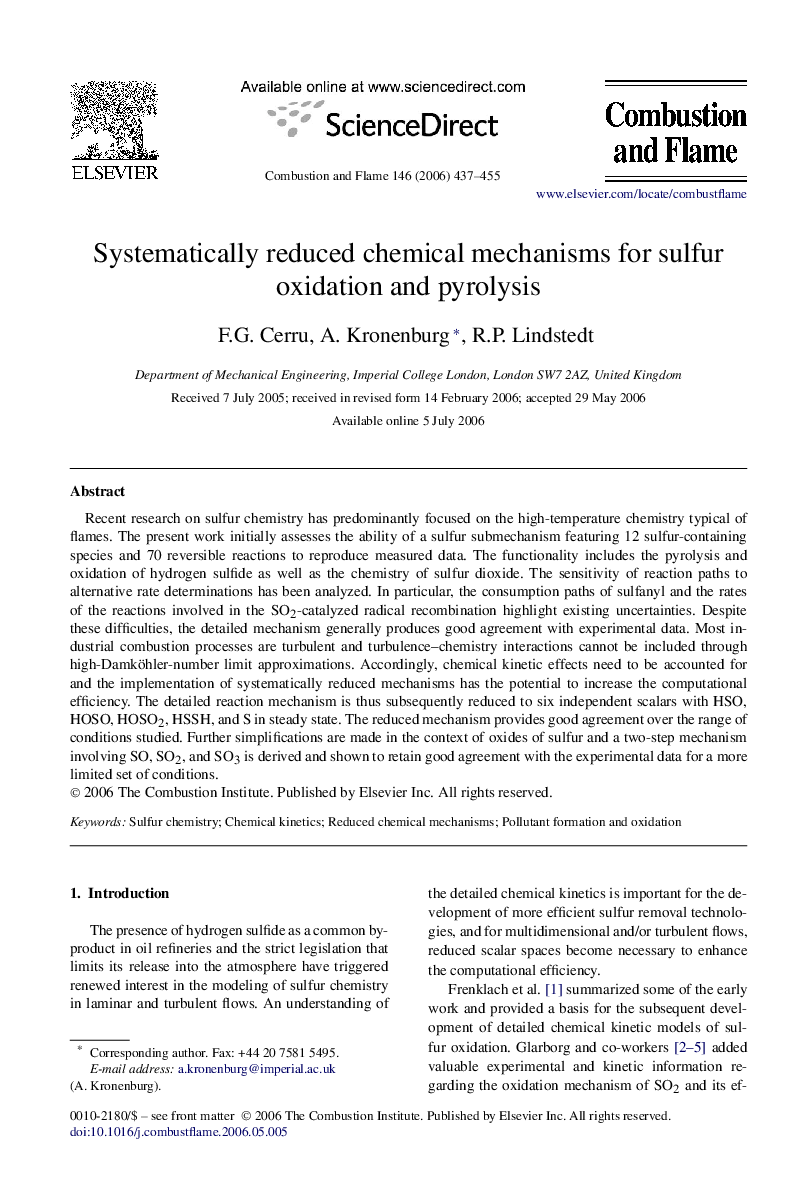| Article ID | Journal | Published Year | Pages | File Type |
|---|---|---|---|---|
| 167495 | Combustion and Flame | 2006 | 19 Pages |
Recent research on sulfur chemistry has predominantly focused on the high-temperature chemistry typical of flames. The present work initially assesses the ability of a sulfur submechanism featuring 12 sulfur-containing species and 70 reversible reactions to reproduce measured data. The functionality includes the pyrolysis and oxidation of hydrogen sulfide as well as the chemistry of sulfur dioxide. The sensitivity of reaction paths to alternative rate determinations has been analyzed. In particular, the consumption paths of sulfanyl and the rates of the reactions involved in the SO2-catalyzed radical recombination highlight existing uncertainties. Despite these difficulties, the detailed mechanism generally produces good agreement with experimental data. Most industrial combustion processes are turbulent and turbulence–chemistry interactions cannot be included through high-Damköhler-number limit approximations. Accordingly, chemical kinetic effects need to be accounted for and the implementation of systematically reduced mechanisms has the potential to increase the computational efficiency. The detailed reaction mechanism is thus subsequently reduced to six independent scalars with HSO, HOSO, HOSO2, HSSH, and S in steady state. The reduced mechanism provides good agreement over the range of conditions studied. Further simplifications are made in the context of oxides of sulfur and a two-step mechanism involving SO, SO2, and SO3 is derived and shown to retain good agreement with the experimental data for a more limited set of conditions.
